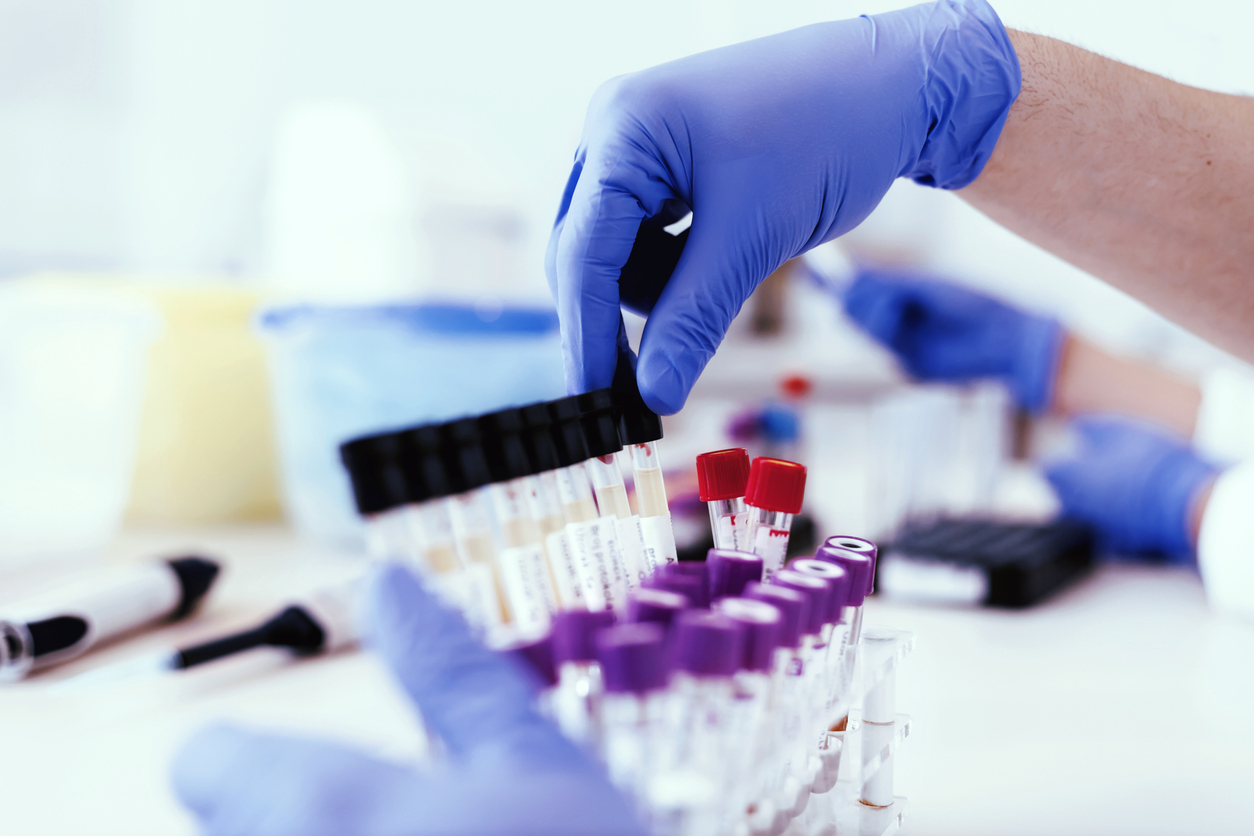THEME III – In vitro testing and integration with epidemiological data
Overview
This Theme exploits our collective expertise in mechanisms of toxicity and carcinogenesis of environmental toxicants, their bioavailability, biological consequences of DNA damage and health effects of exposure to ionizing radiation and toxic chemicals. It addresses questions on the origins of mutations in human tumours and the role of the gut microbiome in toxicity of environmental pollutants.
It uses state-of-the-art in vitro mammalian and bacterial cell systems and high throughput analyses, linked to epidemiological studies of radiation-exposed workers and residents near brownfield sites.

Theme Leads
Dr Richard Haylock

Theme 3 Co-Lead
UK Health Security Agency
CRTH Projects:
Theme 3 Project 2: Occupational exposure to ionising radiation
Research Areas:
I have led the Radiation Epidemiology group since 2017 when it was formed. Previously I led a statistical analysis group, one of the two groups involved in radiation epidemiology at UKHSA.
I joined the National Radiological Protection Board (NRPB) in 1991, which was later subsumed into PHE, now UKHSA, having gained a BSc in Mathematics and an MSc in Medical Statistics both from Leicester University. At NRPB I began research into the use of Bayesian statistics for estimating computationally expensive functions, which led to a PhD in 1997 from Nottingham University. I have considerable experience with the analysis of large epidemiological datasets, in particular the UK National Registry for Radiation Workers, the British Nuclear Fuels Limited cohort and the British Nuclear Test Veteran’s Cohort.
Over the last 10 years I have been involved with a number of large collaborative International epidemiology projects, notably the EC funded SOLO project and the INWORKS studies of occupational radiation exposure risk.
Publications:
Professor David Phillips

KCL Lead & Theme 3 Co-Lead
Kings College London
CRTH Projects:
Theme 3 Project 1: Mutagenesis and toxicology in 3D cell systems
Theme 3 Project 5: Pesticide toxicity
Publications:
Theme III Projects
Project outline: The origins of ~50% of cancer cases remain unknown. Whole genome sequencing has revealed ~49 different patterns of mutations (mutational signatures) in human tumours. Some mutational signatures in human cancers can be replicated experimentally, strengthening epidemiological observations of possible causation by environmental agents. Experimental in vitro systems can shed new light on the origins of mutations in human cancer and the cellular processes and/or environmental agents that give rise to them. A recent development in mammalian cell culture is the isolation and propagation of human tissue organoids. These are grown in specialised 3D culture conditions maintaining the stem cell population and much of the tissue/cell architecture found in vivo. They represent a step change in the ability of in vitro systems to reproduce normal in vivo conditions, providing an important bridge between them. In order to identify in vivo a specific radiation signature in humans we will study genetic and epigenetic changes in leukaemia associated with radiation treatment for a previous cancer.
Overall objectives: To use normal human tissue organoids to explore the mutagenesis and, more broadly, toxicology of environmental toxicants and ionising radiation in vitro in a range of normal human tissues (e.g. gastric, intestine, liver, pancreas, kidney) and to define their modes and mechanisms of action, contributing to their overall risk assessment. Identifying patients who have developed Acute Myeloid Leukaemia (AML) related to a previous radiotherapy (only) treatment for a previous solid tumour such as breast cancer.
Project outline: UKHSA has over many years conducted epidemiological analyses of the health of the UK radiation workforce based on its National Registry for Radiation Workers (NRRW). For a few individuals in the NRRW cohort biological samples have been collected in the context of a study of the ex-BNFL workforce. The suitability of these samples for cytogenetic and genetic biomarker analysis in support of radiation risk assessment and health protection needs to be evaluated.
Overall objectives: This project will scope the feasibility of wider prospective sample collection with a view to identifying and integrating novel prognostic biomarker information to improve health risk estimation. It will also explore the utility of a new protein biomarker developed at MRC Toxicology Unit.
Project outline: To respond to the growing housing need and protect the countryside from development, brownfield sites are increasingly being targeted for housing redevelopment. Depending on their previous use, ex-brownfield sites might pose potential risks to the health of residents in housing developments either in, or in the vicinity of, redeveloped sites. To date, little research has been conducted on the link between brownfield sites and health and the evidence which exists has indicated a potential health concern.
Overall objectives: We will conduct a systematic review of brownfield sites and potential health effects. We will use spatial analysis methods to conduct a detailed exposure assessment of the population living in proximity of brownfield sites to identify potential environmental inequalities by socioeconomic status and ethnicity. In parallel with T2:P3, we will apply spatio-temporal epidemiological methods to quantify any adverse health effects near brownfield sites, with a focus on specific previous uses including gasworks, landfill sites, industrial sites and petrol stations.
Project outline: Pollutants such as pesticides are harmful not only to human cells but also to the commensal microbiota. While the effect on the microbiota could increase the risk of, for example, metabolic diseases, certain bacteria might aid in detoxifying these compounds. This project will use an in vitro microbiomics platform to investigate the potential of gut bacteria to detoxify commonly found environmental pollutants and discover underlying biochemical mechanisms.
Overall objectives: To assess inhibitory effects of commonly encountered environmental pollutants on a representative panel of human gut bacteria; quantify the biochemical capabilities of human gut bacteria to detoxify pollutants; identify enzymatic mechanisms responsible for gut bacteria-pollutant interactions; develop a sequencing-based method to predict detoxication potential of gut bacterial strains.
Respiratory bioavailability Researchers – Ian Mudway (ICL), Ben Forbes (KCL), Zachary Enlo-Scott (KCL)
Project outline: Current regulations assume 100% bioavailability for inhaled pesticides. More realistic estimates are required to enable more rational occupational and environmental health assessments.
Overall objectives: In this project we will test the hypothesis that respiratory bioavailability of inhaled pesticides varies depending on (a) their regional deposition, (b) their physicochemical properties and (c) differences in transepithelial permeability throughout the respiratory tract. Our aim is to develop models that predict the respiratory bioavailability of inhaled pesticides, based on in vitro respiratory transepithelial permeability data, to inform toxicological investigations and integration into health impact assessments.
Unravelling system-wide biomolecular interactions of food-borne pollutants Researchers – Kiran Patil (UC), Anne Willis (UC), Mike Chapman (UC), James Thaventhiran (UC), Ritwick Sarwarkar (UC), Mathew Van de Pette (UC)
Project outline: Several environmental pollutants like pesticides frequently enter the food-chain leading to systemic exposure of the consumers. However, the resulting physiological effects and underlying molecular interactions are only sparsely known.
Overall objectives: The aim is to carry out a large-scale profiling of the effects of hundreds of commonly found environmental pollutants (pesticides, herbicides, and veterinary medicines) using a multi-scale bioassay approach. To this end, the project will bring together different biological systems of toxicity relevance, from liver and immune cells to the gut microbiome, as well as multiple functional readouts, from apoptosis to metabolic aberrations. To identify specific molecular interactions underlying the observed toxic effects, selected interactions identified in the screening phase will be further investigated in molecular detail, especially by using thermal proteome profiling and multi-omic readouts (genomics, epigenomics, transcriptomics, proteomics and metabolomics). Key pathways and mechanisms thus uncovered will be further assessed by using data from published cohort studies to establish their in vivo relevance. Together, the proposed approach will provide a first-of-its-kind view on how environmental pollutants impact cell physiology and suggest potential targets towards mitigation.
Identifying the effects of pesticides on intestinal permeability and gut-bacterial dysbiosis. Researchers – Michael Antoniou (KCL), David Phillips (KCL), Halh Al-Serori (KCL), Robin Mesnage (KCL), Scarlett Ferguson (KCL)
Project outline: Gut microbiome status and integrity can be affected by exposure to environmental chemicals such as pesticides. Exposure to pesticides acting as antibiotics, or fungicides, could generate a stable selection pressure on some microbial communities in the human gut microbiome. This project will provide insight as to whether pesticides commonly found in human food compromise gut well-being, which can lead to serious ill-health, with the ultimate objective of providing evidence to improve regulation of pesticides in the food chain leading to better protection of public health.
Overall objectives: The aim is to investigate whether pesticides can bring about gut microbiome dysbiosis and compromise gut integrity. This PhD project will study the effects of pesticides that are most frequently found in foodstuffs on human gastrointestinal function. It will initially focus on glyphosate, the world’s most widely used herbicide, which inhibits the shikimate pathway in plants leading to their death. It is hypothesised that glyphosate can act as an antibiotic by inhibiting the same shikimate biochemical pathway in microorganisms compromising their viability.
Theme III Investigators
Professor Paul Elliott

HPRU Director
School of Public Health, Imperial College London
CRTH Projects:
Theme 1 Project 1: Nuclear installations and childhood cancer
Theme 1 Project 3: Health risks associated with mobile phones and police radios
Theme 2 Project 2: Pathways and biomarkers of mixtures of chemical exposures
Theme 2 Project 4: Biomarkers of early-life exposures and neurodevelopmental outcomes
Theme 3 Project 3: Chemical exposures and health effects near selected brownfield sites
Publications:
Dr Liz Ainsbury

UKHSA Lead
UK Health Security Agency
CRTH Projects:
Theme 2 Project 1: Exposure and risk markers in medical uses of IR
Theme 3 Project 2: Occupational exposure to ionising radiation
Research Areas:
Liz is a Ph. D. physics graduate with 10 years of experience as a Radiation Protection Scientist at UKHSA’s Centre for Radiation, Chemical and Environmental Effects. As head of the Cytogenetics Group and the Chromosome Dosimetry Service, Liz’s main field of research is radiation biodosimetry – using the cytogenetic (cellular and chromosomal) effects of ionising radiation to estimate individual doses. The service is further underpinned by Liz and her colleagues’ studies into the cytogenetic effects of ionising radiation and statistical methods to support research and development, and Liz also has an interest in wider radiation protection, particularly whole body radiation effects and radiation cataractogenesis.
Liz has participated in many national and international collaborative research projects including leading/co-leading recent projects developing statistical analysis methods for biodosimetry (EU FP7 MULTIBIODOSE WP6 lead, Royal Society IJP080153), advancing EU biodosimetry techniques and networking for provision of emergency response capabilities (MULTIBIODOSE, RENEB, WHO BioDoseNet, EURADOS). Liz currently co-leads two projects focused on development of biomarkers for radiotherapy patients – the NIHR HPRU project “Chemical and Radiation Threats and Hazards” in collaboration with Newcastle University and the US NIH funded CMCR “RTGene”project and is PI for a current EU CONCERT funded project ‘LDLensRad’ investigating mechanisms of radiation induced cataracts. Liz has presented at numerous scientific conferences and meetings, including giving invited talks, and has contributed to approximately 70 peer-reviewed publications, including around 20 as the first named author.
Liz has supervised a number of successful Ph. D. projects and regularly lectures on a number of courses at UK and EU Universities, including the Oxford University Radiation Oncology & Biology M. Sc. in Radiation Biology. Liz’s current committee memberships include ISO Working Group 18 on biological dosimetry (2014 – current) and US National Council on Radiation Protection and Measurements Subcommittee 1-23: Guidance on Radiation Dose Limits for the Lens of the Eye (2013 – current). Liz is a Member of the Institute of Physics (MInstPhys), the Society for Radiation Protection and the Association for Radiation Research.
In 2014, Liz received the MELODI Young Researcher Award for multidisciplinary EU low dose radiation research and in 2007 Liz received the inaugural Institute of Physics Very Early Career Woman Physicist of the Year Award for research and outreach activities encouraging young people to study physics.
Publications:
Dr Michael Antoniou

Investigator
King’s College London
CRTH Projects:
Theme 3 Project 5: Pesticide toxicity
Publications:
Dr Christophe Badie

Theme 2 Co-Lead
UK Health Security Agency
CRTH Projects:
Theme 2 Project 1: Exposure and risk markers in medical uses of IR
Theme 3 Project 1: Mutagenesis and toxicology in 3D cell systems
Research Areas:
I am biologist who carried out my PhD in Radiobiology-Radiopathology at an cancer hospital, the Gustave Roussy institute in Villejuif near Paris which I obtained from the University of Paris XI – Orsay, France). Radiotherapy and many chemotherapeutics rely on DNA double-stranded break (DSB) formation to drive the killing of tumour cells over several cell division cycles but also damaging surrounding normal tissue cells. Using primary cultures of fibroblasts from patients, I worked on inter-individual radiation sensitivity and DSB repair. I identified the first radiotherapy patient whose radiation toxicity was due to a defect in DNA DSB repair which was thought to be almost incompatible with survival at the time; it was found later that the patient had a mutation in ligase IV. After several post-doctorate positions (one on p53 adenovirus and radiotherapy and one cell-cycle arrests following ionising radiation exposure), I became in 2005 the leader of the Cancer Mechanisms and Biomarkers group in the Radiation Effects department at the Centre for Radiation Chemical and Environmental Hazards, of PHE (now UKHSA) near Oxford. More recently, I became interested in cancer genomics and have been associated with an important recent study on mutational signatures of ionizing radiation in second malignancies (Behjati S. et al Nature communications 2016). I have developed a strong interest in the effects of radiation exposure on the immune system as demonstrated by our recent publications on aging of the T-cell receptor repertoire (Candéias SM. et al. Cell Mol Life Sci. 2017) and on inflammatory gene expression following genotoxic cancer therapy (Manning G. et al Front Immunol. 2017) and last but not least, detecting cancers early by tracking and monitoring the progression of initiated, ‘pre-cancerous’ cells (Verbiest T. et al. Leukemia 2018).
I am also very interested in new technical developments to identify sub-populations of blood cells and extracellular vesicles as a source of new biomarkers of radiation exposure, susceptibility and toxicity.
Other roles
I now have an established reputation in the international radiation research field and I am a committee member of the Association for Radiation Research (ARR) and currently its treasurer. I am also a member of the European Radiation Research Society and the Research Orientation of the French Institute of Radioprotection and Nuclear Safety (IRSN) Committee. I have significant involvement in radiation research in Europe MELODI (European Multidisciplinary European Low Dose Risk Research Initiative).
I give lectures at Oxford University for the MSc Radiation Biology of the Department of Oncology on carcinogenesis and individual sensitivity. I am passionate and actively involved in training of the new generation of biologists with expertise in radiation effects and there a currently several MSc and PhD students in the group. I also review for several relevant international journals as well as UK and international funding bodies.
Member of the NATO Research Task Group (RTG) Human Factors and Medicine Panel (HFM) HFM-291: Ionizing Radiation Bioeffects and Countermeasures Member of the scientific council of The International Association of Biological and EPR Radiation Dosimetry (IABERD) is a scientific association, established for the public benefit to advance research, development and education in the biological dosimetry and EPR dosimetry applied to ionizing radiation.
Publications:
Dr Stephen Barnard

Investigator
UK Health Security Agency
CRTH Projects:
Theme 2 Project 1: Exposure and risk markers in medical uses of IR
Theme 3 Project 2: Occupational exposure to ionising radiation
Research Areas:
Stephen is currently working at UKHSA in the Radiation Effects department of the Centre for Radiation, Chemical and Emergency Response (CRCE). In his research area, he develops techniques in biological dosimetry (dicentric, micronuclei and FISH translocations) with a particular focus on implementing and improving the gamma-H2AX/53BP1 foci assay for rapid/triage dose estimation as well as clinical patient applications. He also has an interest in researching the role of radiation in cataractogenesis and lens epithelial cells, particularly the role of DNA damage/repair and proliferation.
Publications:
Dr Bethan Davies

Investigator
School of Public Health, Imperial College London
CRTH Projects:
Theme 1 Project 1: Nuclear installations and childhood cancer
Theme 2 Project 3: Biomarkers of potential exposures from brownfield sites
Theme 3 Project 3: Chemical exposures and health effects near selected brownfield sites
Publications:
Dr Daniela Fecht

Investigator
School of Public Health, Imperial College London
CRTH Projects:
Theme 1 Project 1: Nuclear installations and childhood cancer
Theme 3 Project 3: Chemical exposures and health effects near selected brownfield sites
Publications:
Ms Scarlett Ferguson
PhD student
King’s College London
CRTH Projects:
Theme 3 Project 5: Pesticide toxicity
Publications:
Dr Richard Haylock

Theme 3 Co-Lead
UK Health Security Agency
CRTH Projects:
Theme 3 Project 2: Occupational exposure to ionising radiation
Research Areas:
I have led the Radiation Epidemiology group since 2017 when it was formed. Previously I led a statistical analysis group, one of the two groups involved in radiation epidemiology at UKHSA.
I joined the National Radiological Protection Board (NRPB) in 1991, which was later subsumed into PHE, now UKHSA, having gained a BSc in Mathematics and an MSc in Medical Statistics both from Leicester University. At NRPB I began research into the use of Bayesian statistics for estimating computationally expensive functions, which led to a PhD in 1997 from Nottingham University. I have considerable experience with the analysis of large epidemiological datasets, in particular the UK National Registry for Radiation Workers, the British Nuclear Fuels Limited cohort and the British Nuclear Test Veteran’s Cohort.
Over the last 10 years I have been involved with a number of large collaborative International epidemiology projects, notably the EC funded SOLO project and the INWORKS studies of occupational radiation exposure risk.
Publications:
Dr Robie Kamanyire
Investigator
UK Health Security Agency
Theme 3 Project 3: Chemical exposures and health effects near selected brownfield sites
Research Areas:
Publications:
Ms Anna Lindell

PhD student
University of Cambridge
CRTH Projects:
Theme 3 Project 4: Gut microbiome mediation of toxicity of environmental pollutants
Publications:
Dr Robin Mesnage

Investigator
King’s College London
CRTH Projects:
Theme 3 Project 5: Pesticide toxicity
Publications:
Dr Jayne Moquet

Investigator
UK Health Security Agency
CRTH Projects:
Theme 2 Project 1: Exposure and risk markers in medical uses of IR
Theme 3 Project 2: Occupational exposure to ionising radiation
Research Areas:
Jayne is a Ph. D. biology graduate with more than 35 years of experience as a Radiation Protection Scientist at UKHSA’s Centre for Radiation, Chemical and Environmental Effects. As a Principal Radiation Protection Scientist in the Cytogenetics Group, Jayne has co-authored over 90 papers on experimental and medical aspects of radiation cytogenetics and biological dosimetry, using the dicentric, micronucleus, premature chromosome condensation, FISH-translocation and γ-H2AX assays. In particular, Jayne explores the application of biomarker assays for accidental, occupational and medical exposure scenarios. Current work is focused on development of biomarkers for radiotherapy patients.
Publications:
Dr Ian Mudway

Investigator
Environmental Research Group, School of Public Health, Imperial College London
CRTH Projects:
Theme 2 Project 2: Pathways and biomarkers of mixtures of chemical exposures
Theme 2 Project 3: Biomarkers of potential exposures from brownfield sites
Theme 3 Project 3: Chemical exposures and health effects near selected brownfield sites
Theme 3 Project 5: Pesticide toxicity
Publications:
Dr Grainne O’Brien

Investigator
UK Health Security Agency
CRTH Projects:
Theme 2 Project 1: Exposure and risk markers in medical uses of IR
Theme 3 Project 1: Mutagenesis and toxicology in 3D cell systems
Research Areas:
Grainne has been a member of CRCE’s Cancer Mechanisms and Biomarkers group for over 10 years. During that time she has participated in many research projects such as identifying gene expression biomarkers of radiation exposure by nCounter and QPCR technologies and investigating the effect of low doses of radiation on the hematopoietic stem cell populations. Grainne recently obtained her PhD from Brunel University (UK) where she focused on investigating the genetic and epigenetic pathways affected in the development of acute myeloid leukaemia after radiation exposure.
Publications:
Dr Kiran Patil

Investigator
University of Cambridge
CRTH Projects:
Theme 3 Project 4: Gut microbiome mediation of toxicity of environmental pollutants
Theme 3 Project 5: Pesticide toxicity
Publications:
Professor Jill Kucab
KCL Lead & Theme 3 Co-Lead
Kings College London
CRTH Projects:
Theme 3 Project 1: Mutagenesis and toxicology in 3D cell systems
Publications:
Professor David Phillips

KCL Lead & Theme 3 Co-Lead
Kings College London
CRTH Projects:
Theme 3 Project 1: Mutagenesis and toxicology in 3D cell systems
Theme 3 Project 5: Pesticide toxicity
Publications:
Dr Frédéric Piel

Training Programme Coordinator
School of Public Health, Imperial College London
CRTH Projects:
Theme 1 Project 1: Nuclear installations and childhood cancer
Theme 3 Project 3: Chemical exposures and health effects near selected brownfield sites
Publications:
Dr Les Scott
Investigator
UK Health Security Agency
Theme 3 Project 2: Occupational exposure to ionising radiation
Research Areas:
Publications:
Dr Catherine Smith
Investigator
UK Health Security Agency
Theme 3 Project 2: Occupational exposure to ionising radiation
Research Areas:
Publications:
Dr Mingzhu Sun
Investigator
UK Health Security Agency
CRTH Projects:
Theme 2 Project 1: Exposure and risk markers in medical uses of IR
Theme 3 Project 2: Occupational exposure to ionising radiation
Research Areas:
Mingzhu has a research background in Biomaterials and Tissue Engineering including a number of publications and patents. She also has a wide range of knowledge and hands-on experience in Biomedical Sciences, such as cellular therapy and stem cells. More recently, Mingzhu has become an established radiation scientist of cytogenetic techniques for radiation biodosimetry, particularly application of the cytogenetic dicentric, cytokinesis-block micronucleus and FISH translocation assays for routine and emergency response. Mingzhu has held a number of research grants and is currently contributing to development of the Premature Chromosome Condensation Assay (PCC) within UKHSA and to the NIH CMCR RTGene and NIHR HPRU projects focused on biomarkers of exposure and effect for radiotherapy patients.
Publications:
Professor Anne Willis

University of Cambridge Lead
University of Cambridge
CRTH Projects:
Theme 3 Project 4: Gut microbiome mediation of toxicity of environmental pollutants
Theme 3 Project 5: Pesticide toxicity
